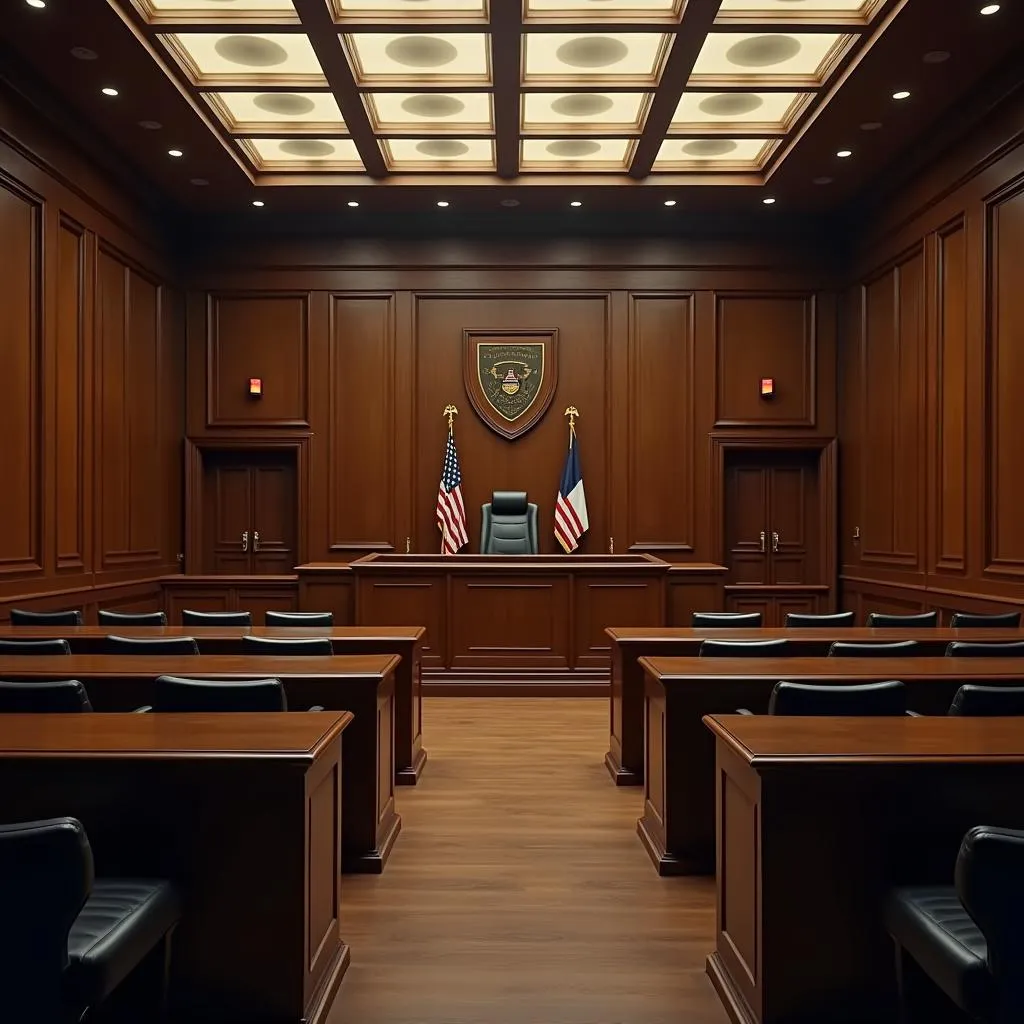Choosing the right outfit for court is a significant decision. Your appearance should convey respect for the judicial process and project an image of responsibility and trustworthiness. While legal advice should always come from your attorney, understanding the impact of color can be a valuable tool.
Decoding the Courtroom Dress Code: Why Color Matters
Courtrooms are places of formality and tradition. While specific dress codes vary, a conservative approach is always recommended. Your clothing should not be distracting or disrespectful to the judge, jury, or the seriousness of the proceedings.
But why is color so important? Color psychology suggests that different hues evoke specific emotions and perceptions. Wearing the right colors can subtly influence how others perceive you, potentially impacting their impression of your credibility and demeanor.
 Formal courtroom setting
Formal courtroom setting
The Best Colors to Wear to Court: Projecting Confidence and Trust
Neutrals are your strongest allies. Opt for classic colors like:
- Navy Blue: Conveying confidence, trustworthiness, and authority, navy blue is an excellent choice for court appearances.
- Gray: This neutral shade represents calmness, composure, and practicality. A well-tailored gray suit or dress can project an image of level-headedness.
- Black: While often associated with formality, black should be used cautiously. It can sometimes appear too severe or intimidating.
- Beige or Tan: These earth tones project approachability and warmth, making them suitable options for certain types of cases.
Remember: Solid colors are always preferable to patterns, which can be distracting.
Colors to Avoid in Court: Steering Clear of Negative Connotations
Certain colors can send unintended messages in a courtroom. It’s best to avoid:
- Bright Colors: Bold hues like red, orange, or bright yellow can be perceived as aggressive, disrespectful, or unprofessional.
- Loud Patterns: Busy prints or flashy designs can be distracting and detract from the seriousness of the proceedings.
- Revealing Clothing: Clothing that is too casual or revealing is never appropriate for court.
 Man and woman dressed in professional court attire
Man and woman dressed in professional court attire
Tips for Choosing Your Courtroom Attire:
- Consult Your Attorney: They can provide guidance on appropriate attire based on your case and the court’s culture.
- Consider Your Role: Your attire should reflect your position in the case (defendant, plaintiff, witness).
- Prioritize Fit and Comfort: Well-fitting, comfortable clothing will help you feel more confident and at ease.
- Pay Attention to Details: Ensure your shoes are polished, your hair is neat, and your accessories are minimal and tasteful.
Creating a Positive Impression: It’s More Than Just Color
Remember, your courtroom attire is just one element of presenting yourself well. Equally important are your demeanor, body language, and overall respect for the court.
Frequently Asked Questions:
1. Can I wear jeans to court?
Generally, jeans are discouraged. It’s best to opt for tailored pants or a skirt.
2. Is it okay to wear makeup to court?
Natural-looking makeup is acceptable. Avoid anything overly dramatic or distracting.
3. What type of shoes should I wear?
Closed-toe shoes are essential. Choose comfortable heels or flats that complement your outfit.
4. Does my hair color matter?
While unnatural hair colors aren’t always prohibited, it’s best to err on the side of caution and opt for a natural look.
5. What if I’m unsure about a specific item of clothing?
When in doubt, always consult your attorney for advice.
 Attorney and client discussing a case
Attorney and client discussing a case
Need further assistance with navigating courtroom etiquette? Contact us at [Phone Number], email us at [Email Address], or visit our office at [Office Address]. Our team is available 24/7 to provide guidance and support.

